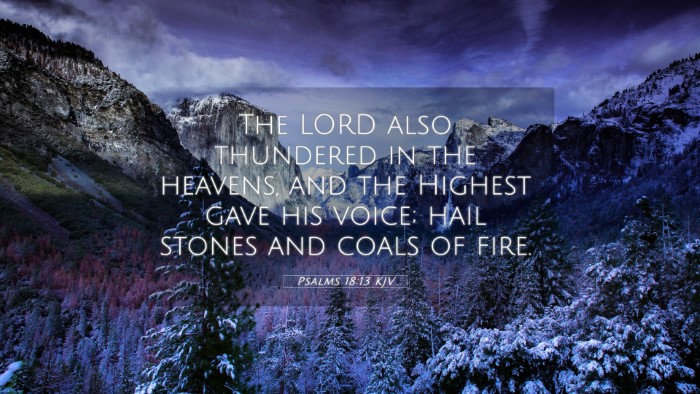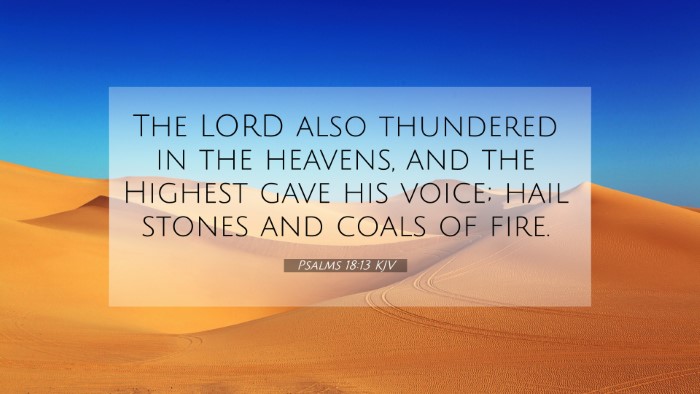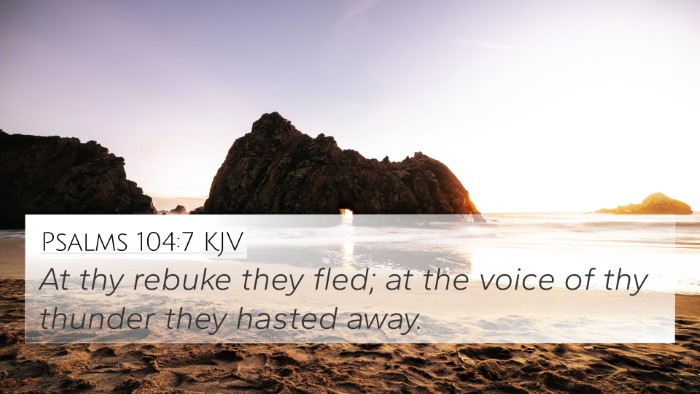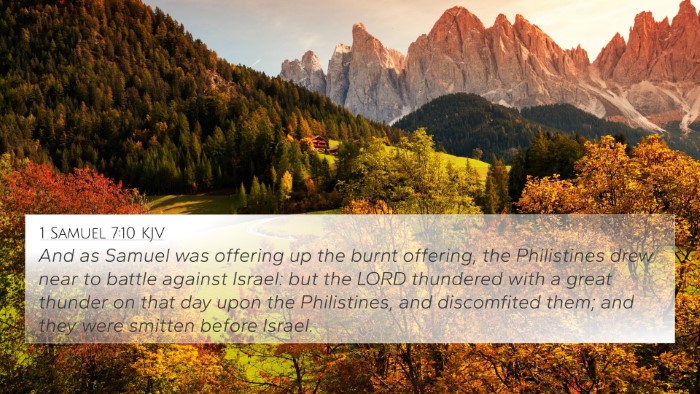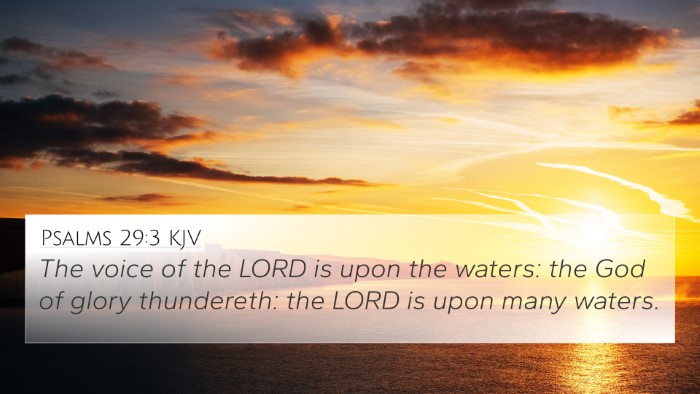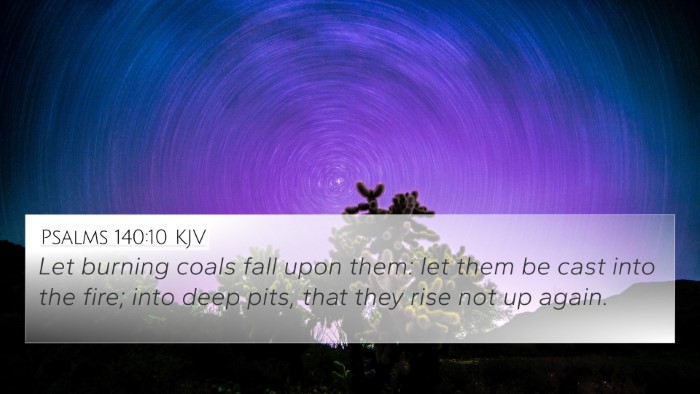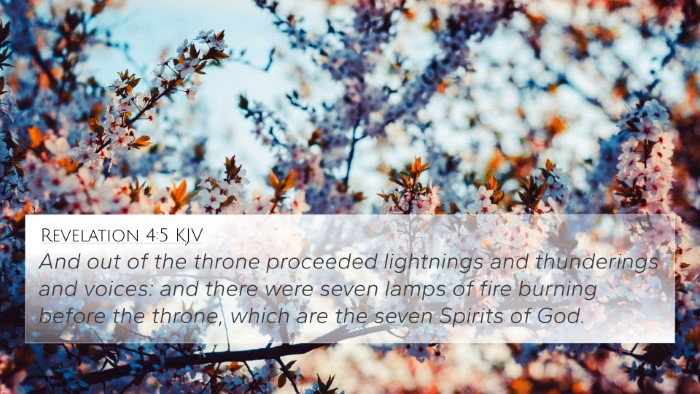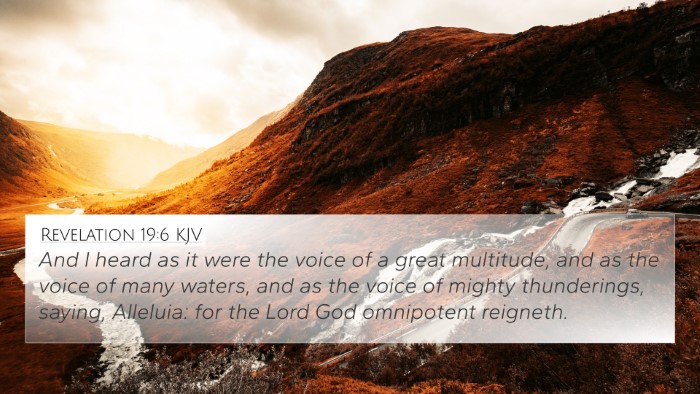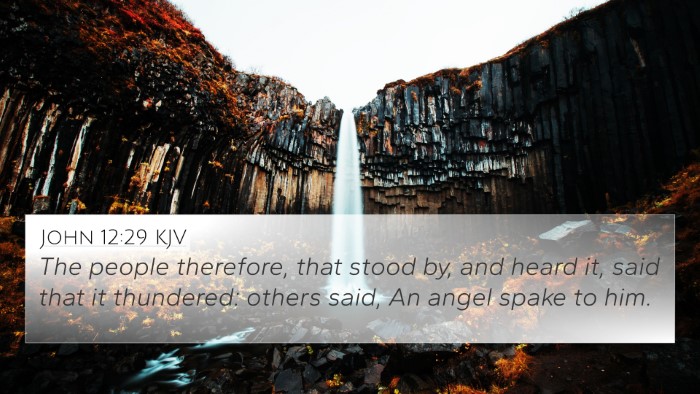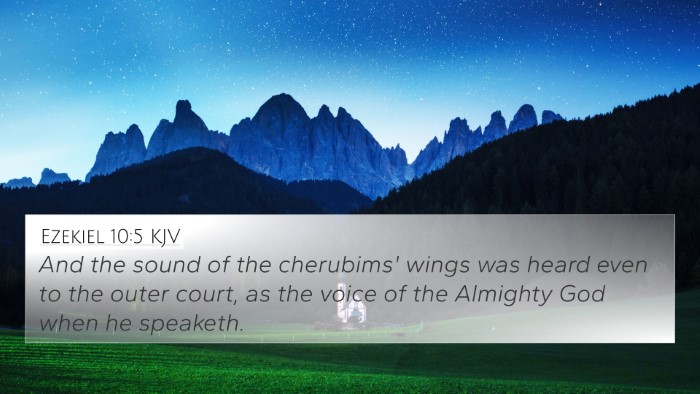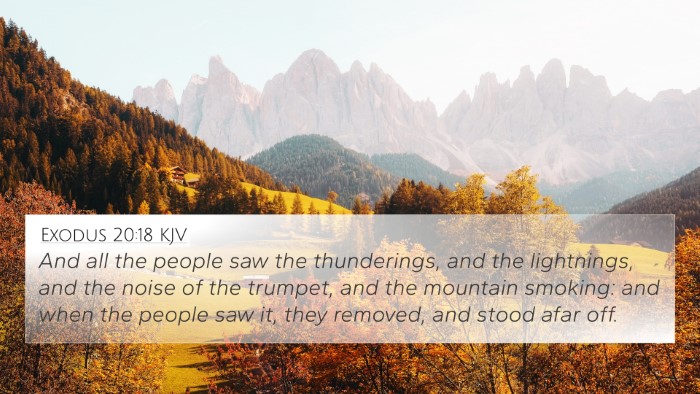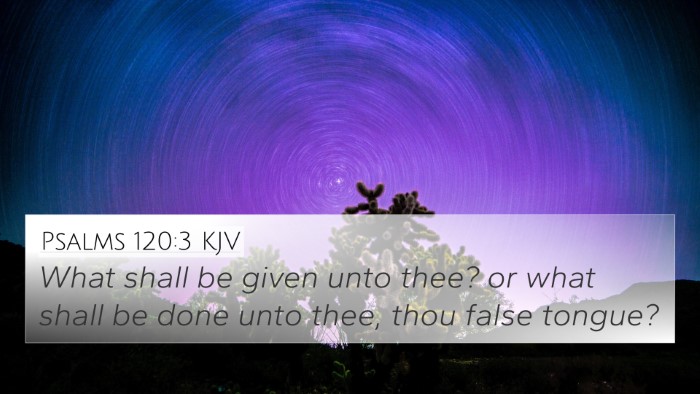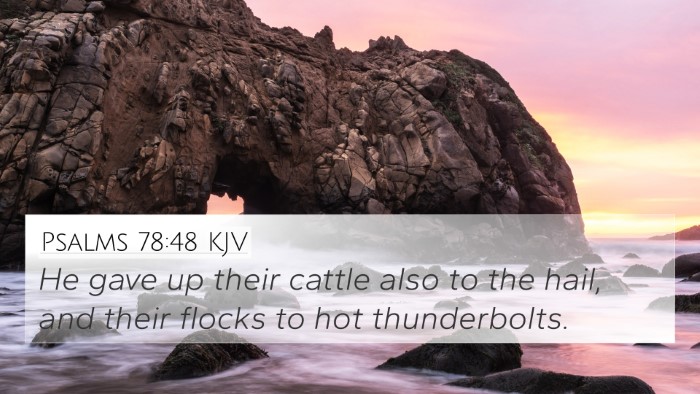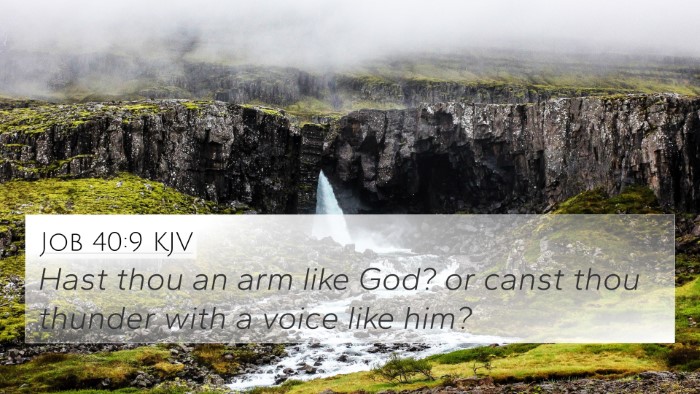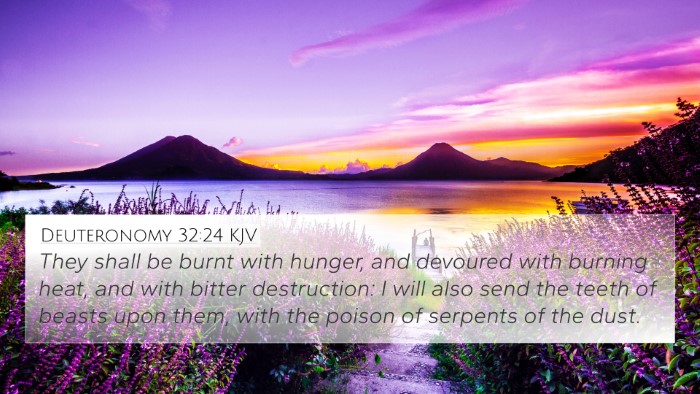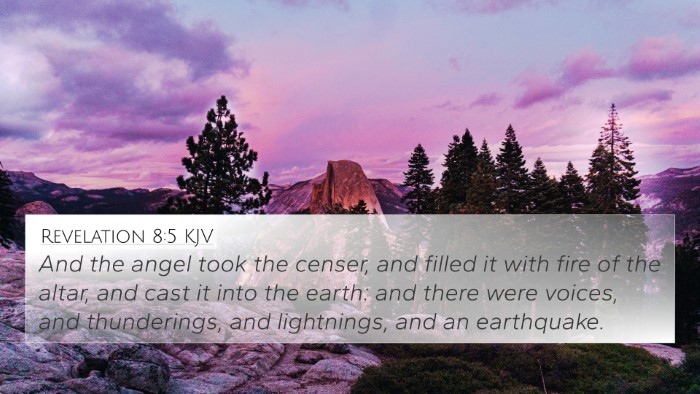Psalms 18:13 - Summary and Interpretation
Psalms 18:13 states, "The LORD also thundered in the heavens, and the Highest gave His voice; hail stones and coals of fire." This verse conveys a powerful image of God's might and majesty. The use of thunder, hailstones, and fire symbolizes divine judgment and intervention in earthly affairs. Through a comparative biblical verse analysis, we can draw thematic connections and explore the significance of this verse within the broader context of Scripture.
Meaning and Insights from Public Domain Commentaries
According to Matthew Henry, this verse reflects God's sovereign control over nature and the supernatural. The thunder signifies God's presence and power, while the hailstones and coals of fire are manifestations of His judgment against the wicked. Henry emphasizes that such imagery is not just a depiction of God's wrath but also a reminder of His protection over His people.
Albert Barnes adds to this interpretation by noting that the vivid descriptions illustrate the weight of God's authority. The thunder and fire represent His relentless anger against oppression and injustice. In the context of David's life, the psalm reveals how God intervened in his struggles and adversities, reinforcing that divine help often arrives amidst turbulent times.
Adam Clarke elucidates the verse further by discussing the geographical and historical contexts in which such natural phenomena were perceived. He highlights that the ancient Israelites understood these signs as God's way of communicating with His people. Thus, the use of natural elements in Psalms 18:13 serves to assert the Lord's sovereignty and His role as a divine protector.
Connections with Other Biblical Texts
Psalms 18:13 can be connected with various other verses throughout the Bible that echo similar themes of divine power and judgment. Some notable cross-references include:
- Exodus 19:16: "And it came to pass on the third day, in the morning, that there were thunders and lightnings, and a thick cloud upon the mount, and the voice of the trumpet exceeding loud; so that all the people that was in the camp trembled." - This demonstrates God's terrifying presence at Sinai.
- Job 37:4: "After it a voice roareth: He thundereth with the voice of his excellency; and he will not stay them when his voice is heard." - Job speaks of God's voice in the midst of storms.
- 2 Samuel 22:14: "The LORD thundered from heaven, and the Most High uttered his voice." - A parallel passage recounting God's intervention.
- Psalms 104:3: "Who layeth the beams of His chambers in the waters; who maketh the clouds His chariot: who walketh upon the wings of the wind." - This depicts God's dominion over creation.
- Revelation 4:5: "And out of the throne proceeded lightnings and thunderings and voices..." - A vision of God’s throne, showcasing His majestic authority.
- Isaiah 29:6: "Thou shalt be visited of the LORD of hosts with thunder, and with earthquake, and great noise, with storm and tempest, and the flame of devouring fire." - God’s judgment illustrated through nature.
- Matthew 24:7: "For nation shall rise against nation, and kingdom against kingdom: and there shall be famines, and pestilences, and earthquakes, in divers places." - Echoing the powerful manifestations in nature related to divine actions.
Thematic Connections in Scripture
The themes found in Psalms 18:13 highlight the overarching narrative of God's authority over the earth. The parallels drawn from these verses not only enrich our understanding of divine sovereignty but also provide insight into God's protective nature toward Israel and the faithful. Through scriptural cross-referencing, seekers can find a deeper appreciation for how the Old Testament sets a foundation for understanding divine intervention seen in the New Testament.
Tools for Bible Cross-Referencing
For those interested in studying the connections between Bible verses, utilizing a Bible concordance or a cross-reference Bible study guide can provide valuable insights. These tools facilitate the exploration of Bible verses that relate to each other, allowing believers to engage in a more profound study of themes and doctrines.
How to Use Bible Cross-References
Understanding how to use cross-references in the Bible allows readers to see a comprehensive picture of scriptural themes. When engaging in cross-referencing Bible study methods, look for themes such as God's justice, mercy, and ultimate authority, which echo throughout the Scriptures. For instance, linking Psalms 18:13 with its cross-references unveils a consistent portrayal of divine might across both Testaments.
Conclusion
Psalms 18:13 serves as a powerful reminder of God's sovereign power and the dynamic relationship He maintains with His creation. Through inter-Biblical dialogue, believers can explore dense theological concepts and derive meaning relevant to their lives today. Whether for personal edification or sermon preparation, an understanding of this verse, alongside its cross-references, enhances our grasp of Scripture's rich tapestry.

